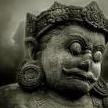-
Posts
1,839 -
Joined
-
Last visited
Reputation Activity
-

-
 jcs got a reaction from TVDino in Craft Camera is coming!
jcs got a reaction from TVDino in Craft Camera is coming!
Craft Camera - cardboard and Arduino? http://petapixel.com/2013/02/25/craft-camera-a-diy-digital-camera-made-with-cardboard-and-arduino/
Cardboard is lighter than magnesium or carbon fiber... Take that BM and Red!
On a serious note, cameras are now computers with sensors and lens mounts. In the future it will be very easy to buy modular components to build any kind of camera one desires, similar to the way we can build custom PCs today. With computational photography there won't be as much need to change lenses- DOF, 3D etc. can be computed from the multiple sensors.
Compare to what happened in the audio world. Analog was thought to be never be matchable with digital by many purists (especially tube amps). Now just about everything is available as a plugin, simulating all major amps, preamps, and effects (even microphones to some extent). Some of it needs more work, but a lot of it is good enough to make even die-hard purists happy. Check out the Axe Fx for guitarists: http://www.fractalaudio.com/p-axe-fx-ii-preamp-fx-processor.php amazing sound!
-
 jcs reacted to wolf33d in Canon have "surprise" at NAB 2016
jcs reacted to wolf33d in Canon have "surprise" at NAB 2016
An hybrid viewfinder, in other words an EVF. On the 5D4? I will take it please. Thanks.
http://www.canonrumors.com/patent-hybrid-viewfinder/
-
 jcs reacted to Chris Bernard in Cell phones replace DSLRs!
jcs reacted to Chris Bernard in Cell phones replace DSLRs!
If you look at upcoming cameras like the L16 I think you are going see the a majority of cameras in phones and consumer and prosumer cameras are going to look very different than they do today. Will it technically be the same? No, but as JCS states computational photography is going to be wildly disruptive to the industry. It's like comparing bows and arrows to guns and bullets.
-
 jcs got a reaction from sanveer in Cell phones replace DSLRs!
jcs got a reaction from sanveer in Cell phones replace DSLRs!
Here's the math and physics: http://www.josephjamesphotography.com/equivalence/
Here I verified the math and physics: http://brightland.com/w/the-full-frame-look-is-a-myth-heres-how-to-prove-it-for-yourself/
I used the Canon 70-200 F2.8 II lens to eliminate lens-lens differences (vs. comparing 2 primes which can't be matched closely- incorrect focal lengths and differing lens construction).
Folks desiring to 'debunk' my debunking (the full frame look (or MF, LF) has/have special magical properties that can't be measured) need to carefully perform tests with a static subject/background and camera position (and follow the math and camera/lens set up precisely). If differences are found, that's cool, then the next step is understanding why in practice the math/physics don't match experiment (from which new math can be derived to better describe reality- the scientific method).
Provided sufficient optics and sensor tech are developed (such as light-field, multi-sensors, etc.), tiny lenses and sensors will be able to provide very shallow DOF.
-
 jcs reacted to Antonis in Cell phones replace DSLRs!
jcs reacted to Antonis in Cell phones replace DSLRs!
It's already happening on Youtube.
Many vloggers just film with their iPhones nowadays.
-
 jcs reacted to OliKMIA in Cell phones replace DSLRs!
jcs reacted to OliKMIA in Cell phones replace DSLRs!
I think that we are missing the point here. Of course DSRL with their larger sensor and better optic offer better flexibility, especially in low light but nowadays, smartphones have reach a very decent level. In daylight, It would be hard for me to differentiate 2 photo side by side taken from a DSLR and an Iphone.
Many user here can disagree with that level of quality but we are the minority. The mass who doesn't care about DOF, manuel mode and all that stuff has already voted. They elected Iphone and Droid phones with the consequence of killing the point and shoot market.
All smartphone have a camera, no need for extra weight and cost, they take acceptable pic for food blog, soccer mom, selfie, pets and vacations etc. They also offers the immense advantage of being able to upload a pic on FB, instagram and twitter in 2 seconds.
For this type of application,s who cares about dynamic range, 14 bits, etc. Most people won't go further than instagram filter and faceswap.So why throw extra $$$ to get a heavy camera than can't upload anything and add filters without a computer ?
-
 jcs reacted to Mattias Burling in 5D Mark 3 Raw in 2016?
jcs reacted to Mattias Burling in 5D Mark 3 Raw in 2016?
Had a full schedule today but when I popped out to the local store it was a nice sun set. So I decided to take the opportunity to test the lowlight, which was excellent.
And the x3 Crop mode which was awesome.
Basically it turns my 35mm f2.0 IS into two stabilized primes, 35 and 105mm.
And my 24-105/4 IS becomes a stabilized 24-315mm f4... pretty decent range imo.
Or one can see it as a 14bit Raw camera with both a Full Frame and a s16 sized sensor.
The focus was off in two or three shots since I forgot that EF glas isn't exactly trustworthy at the end of the focus throw.
And in the graded shot it is over the top, I wanted the sky to really bleed.
Also notice how in the very last shot the IS really saves the flimsy tripod. I only had my light tripod that was sitting in my car.
I bet it would be stable with my Manfrotto 519 that I used in the Red One videos.
-
 jcs got a reaction from IronFilm in Cell phones replace DSLRs!
jcs got a reaction from IronFilm in Cell phones replace DSLRs!
Computational Photography/Imaging is a rapidly growing field: https://en.wikipedia.org/wiki/Computational_photography
This is how shallow DOF, HDR, 3D capture/reconstruction, and post-processing DOF control will someday become commonplace with tiny devices.
-
 jcs got a reaction from Tiago Rosa-Rosso in Cell phones replace DSLRs!
jcs got a reaction from Tiago Rosa-Rosso in Cell phones replace DSLRs!
Here's the math and physics: http://www.josephjamesphotography.com/equivalence/
Here I verified the math and physics: http://brightland.com/w/the-full-frame-look-is-a-myth-heres-how-to-prove-it-for-yourself/
I used the Canon 70-200 F2.8 II lens to eliminate lens-lens differences (vs. comparing 2 primes which can't be matched closely- incorrect focal lengths and differing lens construction).
Folks desiring to 'debunk' my debunking (the full frame look (or MF, LF) has/have special magical properties that can't be measured) need to carefully perform tests with a static subject/background and camera position (and follow the math and camera/lens set up precisely). If differences are found, that's cool, then the next step is understanding why in practice the math/physics don't match experiment (from which new math can be derived to better describe reality- the scientific method).
Provided sufficient optics and sensor tech are developed (such as light-field, multi-sensors, etc.), tiny lenses and sensors will be able to provide very shallow DOF.
-
 jcs reacted to Tiago Rosa-Rosso in Cell phones replace DSLRs!
jcs reacted to Tiago Rosa-Rosso in Cell phones replace DSLRs!
I believe technology will sooner or later find a away to emulate the look of medium format in a tiny format. Don´t know how or when, but i don't think its impossible.
-
 jcs reacted to Nikkor in Cell phones replace DSLRs!
jcs reacted to Nikkor in Cell phones replace DSLRs!
Why would you do that? There is no difference whatsover between formats, the size of the sensor is totally irrelevant.
-
 jcs got a reaction from Mat Mayer in Great Modern Lens Article!
jcs got a reaction from Mat Mayer in Great Modern Lens Article!
Guys- if there is a real effect, it can be measured and clearly A/B demonstrated. Folks argued endlessly that the full frame look was real. After I did the A/B tests with backing math folks stopped arguing. Not one person presented a single counter example (this applies to medium and large format too). Folks argue that it's easier and cheaper (FF) to get shallow DOF with larger sensors, however everyone agrees with that point.
Caldwell designed the SpeedBooster...
No one is disputing that old/different lenses look different. Only that the article is pseudoscience...
-
 jcs got a reaction from kidzrevil in Great Modern Lens Article!
jcs got a reaction from kidzrevil in Great Modern Lens Article!
Guys- if there is a real effect, it can be measured and clearly A/B demonstrated. Folks argued endlessly that the full frame look was real. After I did the A/B tests with backing math folks stopped arguing. Not one person presented a single counter example (this applies to medium and large format too). Folks argue that it's easier and cheaper (FF) to get shallow DOF with larger sensors, however everyone agrees with that point.
Caldwell designed the SpeedBooster...
No one is disputing that old/different lenses look different. Only that the article is pseudoscience...
-
 jcs reacted to rak_heri in Great Modern Lens Article!
jcs reacted to rak_heri in Great Modern Lens Article!
While there is a real rendering difference between the Sigma and Nikkor, there's a lack of logic in the conclusions. The difference in rendering could be due to the low lens count, or maybe the coatings or lens curvature changed between the designs. There are multiple factors and # of lens counts just a coincidence.
This is like observing birds migrating in the south during seasons and then concluding that the birds bring with them the heat.
-
 jcs reacted to Brian Caldwell in Great Modern Lens Article!
jcs reacted to Brian Caldwell in Great Modern Lens Article!
I probably should have stayed away from this topic, but I found the article so utterly revolting that I just couldn't help myself. Its difficult to even begin a thorough critique, and I'm not going to do it here. Suffice to say that he relies almost entirely on non-standard, non-optical terminology (e.g., 3D, tonality, micro contrast, flat), and he never bothers to define these terms in a precise and unambiguous way. Lenses can be fully characterized by things that are well-defined and can actually be measured, such as MTF, veiling glare, distortion, transmission vs. wavelength, etc.. Why rely on pseudo-scientific nonsense when proper characterization methods are well established? He then goes on to show images that supposedly illustrate his points, but none of the images are actually carefully done comparisons under fixed lighting conditions, post processing, etc., so they are absolutely worthless as far as I'm concerned. He also makes a bunch of ternary diagrams that make absolutely no sense at all - "line of realism"??? WTF??? And his obsession with the number of elements in a design is absolutely bizzare.
-
 jcs got a reaction from andrgl in Great Modern Lens Article!
jcs got a reaction from andrgl in Great Modern Lens Article!
Sharpness / resolution / microcontrast / local contrast / global contrast are all the same thing at different frequences. Resolution/sharpness represent the highest frequencies up through larger scale contrast at lower frequencies. An image is a composite of all the frequencies, from lowest to highest. This can be visualized by looking at the discrete cosine transform (used in JPEG, H264 etc.):
https://en.wikipedia.org/wiki/Discrete_cosine_transform
https://en.wikipedia.org/wiki/Discrete_cosine_transform#/media/File:Dct-table.png
The MTF is one form of lens performance measurement: http://www.cambridgeincolour.com/tutorials/lens-quality-mtf-resolution.htm
I noticed in the Nikkor vs. Sigma examples, the Nikkor lost a lot of detail in the shadows, and the shadows were also blurrier (less fine detail, along with an overall lower detail image. Less detail/sharpness can help make images look more organic (digitally sharp images look less real)). To generate a similar look in post, we could write code to blur pixels based on luminance level.
If one prefers the look of, for example, a particular Nikkor over a Sigma, comparing their MTF charts might be helpful in understanding why. Not all frequencies are captured the same, and performance variation through the spectrum can explain why one lens is preferred over another, for a particular use. If "imperfect" lenses have desired character, these imperfections can be measured, and then used in marketing material to help people get a desired, and known look. Without hand-waving, internet arguing, and pseudoscience
-
 jcs got a reaction from kidzrevil in Great Modern Lens Article!
jcs got a reaction from kidzrevil in Great Modern Lens Article!
Sharpness / resolution / microcontrast / local contrast / global contrast are all the same thing at different frequences. Resolution/sharpness represent the highest frequencies up through larger scale contrast at lower frequencies. An image is a composite of all the frequencies, from lowest to highest. This can be visualized by looking at the discrete cosine transform (used in JPEG, H264 etc.):
https://en.wikipedia.org/wiki/Discrete_cosine_transform
https://en.wikipedia.org/wiki/Discrete_cosine_transform#/media/File:Dct-table.png
The MTF is one form of lens performance measurement: http://www.cambridgeincolour.com/tutorials/lens-quality-mtf-resolution.htm
I noticed in the Nikkor vs. Sigma examples, the Nikkor lost a lot of detail in the shadows, and the shadows were also blurrier (less fine detail, along with an overall lower detail image. Less detail/sharpness can help make images look more organic (digitally sharp images look less real)). To generate a similar look in post, we could write code to blur pixels based on luminance level.
If one prefers the look of, for example, a particular Nikkor over a Sigma, comparing their MTF charts might be helpful in understanding why. Not all frequencies are captured the same, and performance variation through the spectrum can explain why one lens is preferred over another, for a particular use. If "imperfect" lenses have desired character, these imperfections can be measured, and then used in marketing material to help people get a desired, and known look. Without hand-waving, internet arguing, and pseudoscience
-
 jcs reacted to Kubrickian in Canon XC10 4K camcorder
jcs reacted to Kubrickian in Canon XC10 4K camcorder
I recently had to travel around Europe on a job documenting Study Abroad classes. The XC10 made it easy and pleasurable. This was shot in all 1080 c-log, not 4k if you'd like to check it out.
-
 jcs reacted to Phil Holland in RED "weapon" 8K footage
jcs reacted to Phil Holland in RED "weapon" 8K footage
Thanks for the kind words guys. This was a fun and sort of insane shoot.
I've written up a few words on lens selection, lighting, and post workflow with some BTS stills here:
http://phfx.com/articles/forgedIn8K/
To answer a few questions.
@Dan Wake - Editing native REDCODE RAW is something I've been doing for a while. This shoot was done this way using Adobe Premiere Pro CC which has GPU acceleration and adaptive resolution settings while editing. I even ran some of these files through my laptop and was able to "work" effectively. While this is not the only way of working, especially on longer projections with more content and assets, it's certainly something that doable not on a NASA supercomputer
@araucaria - 8K is interesting. For display purposes I would prefer 8K to hit theatrical and exhibition use before it hits home. At the moment and for a long time, like a decade plus, UHD 4K is going to be the focused format for home use. Especially since every major studio has now come to an agreement on a UHD Premium Standard via the UHD Alliance. The resolution itself can be down sampled of course and that provides certain advantages as you mentioned to the debayering process. However, 8K will indeed land on screens and screens smaller than you think. I wrote up a paper titled "The Window Effect" that explains much about resolution and optimum viewing distances not too long ago. Here's a link to it:
http://www.phfx.com/articles/theWindowEffect/
@Jimmy - Thank you Jimmy. IMAX theatrical presentation is one area I'd like to see this camera used the most.
@DPStewart - Thanks Stewart. Resolution is all about "what type" of resolution it is. I have a great deal of experience in the world of motion picture film scanning and film's resolving power purely comes down to what format you are shooting, what stock you are using, and the glass you are shooting with. Super 35mm for instance resolves about 4K-5K worth of detail. Typically we scan it in at 6K and over sample to down sample to yield better quality results. At 6K resolution Super 35mm film's grain is globular and larger than a pixel. It isn't exactly sharp, but it's rather smooth. Most higher end digital cinema cameras that are using Bayer Pattern sensor tech are somewhat emulating that effect to a degree. When we get to larger film formats like VistaVision 8-perf, 65mm 5-perf, and 70mm IMAX 15-perf the resolution increases based on the negative size. If you've seen a full optical release of a properly shot IMAX film, it's still a tremendous visual treat.
@Mattias Burling - Much of what I'm after with my images is due to my film background. I'd say not until fairly recently, like around 2013 did we actually get into the true potential of digital film alternatives when it comes to motion picture production. Film still has that magical quality to it that's something hard to truly define, but at this point there's certainly quality alternatives for those who choose the crazy world of digital capture. And it's a very controlled yet flexible format at that. Much of my earlier work before RED hit the scene and even before the PV Genesis was making digital cameras look more like film. Adding grain was one aspect of that, but I'll tell you 10+ years ago it was much harder to do than with today's cameras. Especially if you are using high resolution scans of actual film grain.
@Goose - Thank you. Seems like 20000 people like it and about 3 don't so far But boy do those negative comments sting.
@AaronChicago - Guardians of the Galaxy Vol.2 has already begun filming on the first batch of 8K Weapons and it's going to be interesting to see how that translates to VFX and post workflow for sure. I think they are aiming for a 4K finish if I'm not mistaken. The standard in 2020 will still be mostly 4K, but 8K broadcast trials start this year and in 2020 NHK is hoping to broadcast the Olympics in 8K "somewhere". As for the next 10-15 years, yep, a lot of UHD 4K with a growing trend of 8K for productions that are looking to explore that world. HDR is going to be the next big thing that comes home it seems.
@richg101 - You hit the nail on the head when it comes to glass Richard. That's the main reason I went with the Otus primes. However! I did also use a few several decades old Olympus OM lenses in there as well as a Leica-R and Canon 200mm (so I didn't set myself on fire). I have a feeling the Otus trio will be something I'll be shooting a lot of content with on the 8K. And much of this was f/2, with a few f/1.4-f/2.8 shots in there. There's something truly seductive about this format size and focusing on nuanced detail in my opinion.
@Dan Wake - That flicker doesn't show in my ProRes masters here. It appears it's a YouTube encoding artifact. Had to watch both a few times to make sure I wasn't crazy. Seems to be minimized when watching full screen on a 4K display, but it's certainly weird.
-
 jcs reacted to Nikkor in RED "weapon" 8K footage
jcs reacted to Nikkor in RED "weapon" 8K footage
details: http://www.reduser.net/forum/showthread.php?141427-FORGED-Shot-on-RED-Weapon-8K
-
 jcs reacted to Brian Caldwell in A Tale of Two T2.0 Zooms (for A6300)
jcs reacted to Brian Caldwell in A Tale of Two T2.0 Zooms (for A6300)
I'm not entirely sure about the IQ - its something I would want to test. Its worth noting that inexpensive stills glass is often better than very expensive cine glass. For example, I once did a projection bench comparison of an older generation Nikon 70-200mm f/2.8 zoom against a $20k Zeiss 80-200 T2.9 CZ.2, and the Nikon was clearly superior, especially in the corners. I suspect there is a good reason why you *never* see MTF charts of cine glass!
I haven't found a way to do it in a compact form factor while maintaining even remotely decent image quality. There is an infamous Kodak patent that addresses this problem, but the example given in the patent is so incredibly poor that its just not enabling at all. You could do it with a relay type system, which I would call a Keplerian style, or real image focal reducer. However, you then wind up with a huge ungainly and under-performing setup just like the old Nikon E3.
Its incredibly nice to learn about this (!!), and I'd like to know as much as possible about your work. BTW, a Speed Booster XL will take an f/2.8 zoom down to f/1.8, which is probably around T/2.0 for most zooms.
-
 jcs got a reaction from kaylee in Canon 1DX II - Video Camera Perspective - Mini interview on the missing details
jcs got a reaction from kaylee in Canon 1DX II - Video Camera Perspective - Mini interview on the missing details
Crop factor is computed from the diagonal length, as opposed to the width or height. You can think of the diagonal as the diameter of the image circle. When comparing full frame 1080p compared to 4K crop (as with the 1DX II), we must use the diagonals of the imaging areas as opposed to the full sensor (since HD is 16:9 and the sensor is 3:2).
Since we know the full sensor/pixel size is 5472 x 3648, we can compute the following:
Full frame HD mode uses the full sensor width, so we need to compute the 16:9-based height from the width:
5472*9/16 = 3078 height. 5472/3078 = 1.78 = 16/9. The full frame diagonal is then:
sqrt(5472^2 + 3078^2) = 6278.29
DCI 4K cropped is:
sqrt(4096^2 + 2160^2) = 4630.64
Which makes the exact crop factor:
6278.29/4630.64 =1.3558
-
 jcs got a reaction from photographer-at-large in Canon 1DX II - Video Camera Perspective - Mini interview on the missing details
jcs got a reaction from photographer-at-large in Canon 1DX II - Video Camera Perspective - Mini interview on the missing details
Crop factor is computed from the diagonal length, as opposed to the width or height. You can think of the diagonal as the diameter of the image circle. When comparing full frame 1080p compared to 4K crop (as with the 1DX II), we must use the diagonals of the imaging areas as opposed to the full sensor (since HD is 16:9 and the sensor is 3:2).
Since we know the full sensor/pixel size is 5472 x 3648, we can compute the following:
Full frame HD mode uses the full sensor width, so we need to compute the 16:9-based height from the width:
5472*9/16 = 3078 height. 5472/3078 = 1.78 = 16/9. The full frame diagonal is then:
sqrt(5472^2 + 3078^2) = 6278.29
DCI 4K cropped is:
sqrt(4096^2 + 2160^2) = 4630.64
Which makes the exact crop factor:
6278.29/4630.64 =1.3558
-
 jcs reacted to mkabi in 1dx mark ii, 4k 60fps?
jcs reacted to mkabi in 1dx mark ii, 4k 60fps?
I have used the focus peaking feature on an external monitor. And, to be honest, on a run and gun situation.... I would use it over the old method of magnifying and checking focus, but the new PDAF.... It's just simple... I would definitely use it over peaking any day. If you haven't used it... Trust me... You are missing out. Borrow, Rent a 70D... Also, get yourself a 50/1.2. Play around with the touch screen for day... And it will definitely change your opinion of peaking versus PDAF.




.jpg.f8601c3c33ff6d5d3e655d831d6aae2c.thumb.jpg.82f466ee9ff26c5f6212b0cc878a5b17.jpg)




